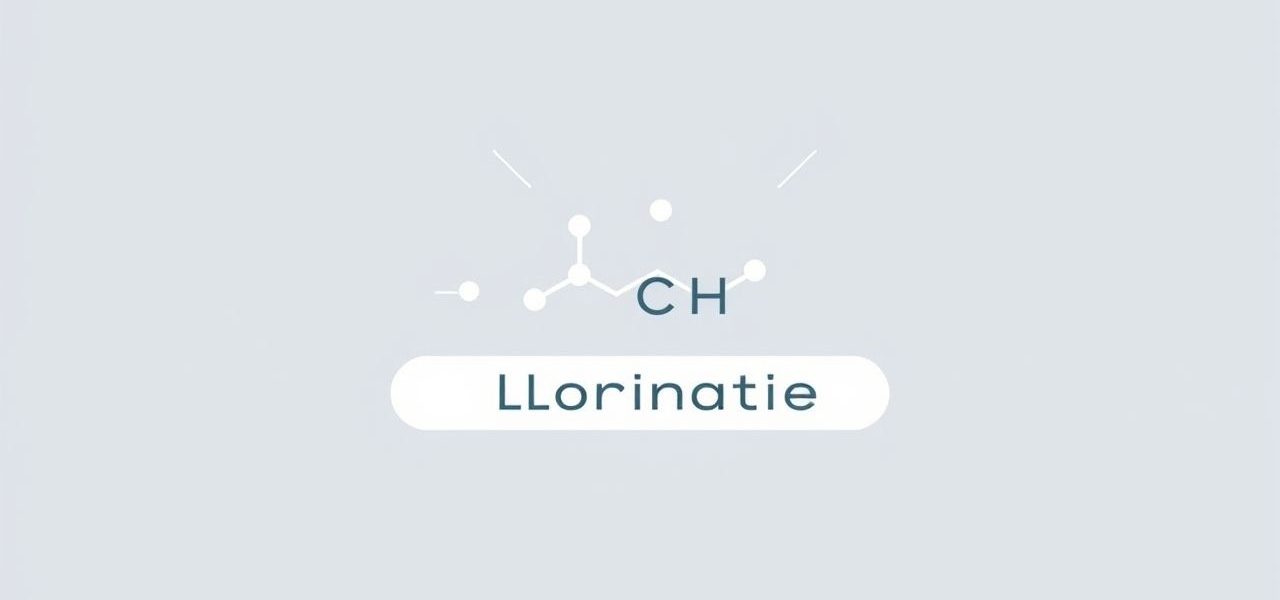Chlorination of alkanes is one of the most common reactions studied in organic chemistry, particularly in the context of free radical substitution. This process not only plays a crucial role in industrial chemistry but also serves as a foundation for understanding more complex chemical mechanisms. Students and educators often explore chlorination through a variety of questions that test knowledge on reaction mechanisms, conditions, products, and selectivity. A clear understanding of these questions helps in grasping core organic chemistry concepts.
What is Chlorination of Alkanes?
Chlorination of alkanes refers to the chemical reaction where chlorine atoms are introduced into an alkane molecule, typically replacing hydrogen atoms. This substitution occurs via a free radical mechanism and is initiated by heat or ultraviolet (UV) light. The result is a mixture of chlorinated hydrocarbons, which may include mono-, di-, and even poly-chlorinated products depending on reaction conditions.
General Reaction
The general formula for the chlorination of methane (the simplest alkane) is:
CHâ + Clâ â CHâCl + HCl (in the presence of UV light)
Stages of the Reaction
- Initiation: Clâ â 2Cl (by UV light)
- Propagation:
- Cl + CHâ â CHâ + HCl
- CHâ + Clâ â CHâCl + Cl
- Termination: Free radicals combine to form stable molecules (e.g., Cl + Cl â Clâ)
Common Questions on Chlorination of Alkanes
1. Why is UV light required in chlorination reactions?
UV light provides the energy needed to break the Cl-Cl bond in chlorine molecules during the initiation step. Without UV light or heat, the reaction will not begin, as free radicals are not generated.
2. What type of mechanism does chlorination follow?
Chlorination of alkanes proceeds through a free radical chain mechanism, involving initiation, propagation, and termination steps. This is a key concept in organic chemistry and differentiates chlorination from other types of substitution reactions.
3. Why does chlorination result in multiple products?
Because more than one hydrogen atom in an alkane molecule can be replaced, chlorination often yields a mixture of products. For example, in propane, both primary and secondary hydrogens are available, leading to different mono-chlorinated isomers like 1-chloropropane and 2-chloropropane.
Selectivity in Chlorination
Chlorination is not highly selective compared to bromination. Chlorine reacts relatively quickly and can attack primary, secondary, and tertiary hydrogen atoms, though with varying reactivity levels.
Relative Reactivity of Hydrogen Atoms
- Tertiary hydrogen: most reactive
- Secondary hydrogen: moderately reactive
- Primary hydrogen: least reactive
The ratio of substitution often follows the trend: 5 (tertiary): 3.8 (secondary): 1 (primary). This means that even if primary hydrogens are more numerous, substitution may still favor secondary or tertiary positions.
Practice Problems and Their Solutions
Question 1:
Write the possible products of chlorinating butane (CâHââ) under UV light.
Answer:
- 1-chlorobutane
- 2-chlorobutane
These are the mono-chlorinated products. Di- or poly-chlorinated products may also form under prolonged exposure.
Question 2:
Which hydrogen in isobutane is most likely to be substituted during chlorination?
Answer:
The tertiary hydrogen is most reactive in isobutane. Therefore, the most likely product is tert-butyl chloride.
Question 3:
Why is bromination more selective than chlorination?
Answer:
Bromine is less reactive than chlorine, requiring more energy to initiate the reaction. As a result, it proceeds more selectively, preferring substitution at the most stable carbocation (usually tertiary).
Question 4:
What happens if excess chlorine is used during the chlorination of methane?
Answer:
Multiple substitutions can occur, producing dichloromethane, trichloromethane (chloroform), and tetrachloromethane (carbon tetrachloride).
Laboratory Considerations
Safety
Chlorine gas is highly toxic and must be handled in a well-ventilated fume hood. UV light is also dangerous to skin and eyes, requiring protective gear.
Controlling Product Formation
- Limiting chlorine controls over-chlorination.
- Short reaction times reduce side products.
- Low temperature can help reduce multiple substitutions.
Real-Life Applications of Alkane Chlorination
Chlorinated alkanes are used in many industries. For example:
- Solvents: Chloroform and carbon tetrachloride were once common industrial solvents.
- Intermediates: Chlorinated compounds serve as building blocks in pharmaceutical and polymer production.
- Propellants: Historically used in aerosol sprays, though many have been phased out due to environmental concerns.
Environmental and Health Impact
Though useful, many chlorinated hydrocarbons are persistent in the environment and toxic to humans and wildlife. They may accumulate in the food chain and have been linked to serious health issues such as liver damage and cancer. Proper handling and disposal are critical.
Tips for Answering Chlorination Questions in Exams
- Always write a balanced chemical equation.
- Identify all possible products, especially in symmetrical vs. asymmetrical alkanes.
- Explain the mechanism clearly with initiation, propagation, and termination steps.
- Mention selectivity and explain the most likely product based on hydrogen reactivity.
- Include reasoning when asked to compare chlorination with bromination.
Chlorination of alkanes is a fundamental concept in organic chemistry that highlights the behavior of free radicals, reactivity, and selectivity. Understanding how to answer chlorination of alkanes questions involves more than just memorizing formulas it requires a grasp of the underlying mechanisms, chemical reasoning, and practical implications. Whether you are preparing for an exam or exploring chemical processes, mastering this topic lays a strong foundation for further study in both academic and industrial chemistry.
